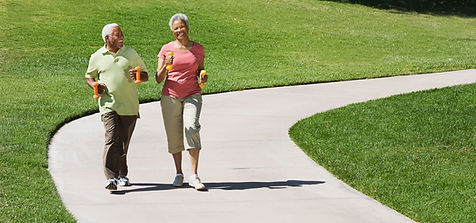




Age-Friendly Domains





The below descriptions are pulled from the WHO “Global Age-friendly Cities: A Guide.”
Click here to read more in-depth about the eight age-friendly domains.
Housing
Mobility & Access
Housing is essential to safety and well-being in all phases of life. There is a link between appropriate housing and access to community and social services in influencing the independence and quality of life of older people. The housing domain includes issues of affordability, access to essential utilities and services, universal design, age-in-pace modifications, maintenance, community integrations, housing options, and overall living environment.
Age-Friendly Louisville has renamed the Transportation domain to “Mobility & Access” to reflect the broader meaning of transportation as the ability of an individual to comfortably move in and around their community.Transportation, including accessible and affordable public transport, is a key factor influencing active aging. Elements of mobility and access are deeply integrated across all of the eight domains. Being able to move about the city determines social and civic participation and access to community and health services. This domain encompasses the availability and affordability of transportation, the reliability, and frequency of transportation, age-friendly vehicles, driving conditions, and parking.


Social Participation
Social participation and social support are strongly connected to good health and well-being throughout life. Participating in leisure, social, cultural and spiritual activities in the community, as well as with the family, allows older people to continue to exercise their competence, to enjoy respect and esteem, and to maintain or establish supportive and caring relationships. It fosters social integration and is the key to staying informed. Facilitating elements of social inclusion include accessible and affordable social opportunities/activities, awareness of activities and events, isolation reduction, and intergenerational culture.

Outdoor Spaces & Buildings

Outdoor Spaces & Buildings
The outside environment and public buildings have a major impact on the mobility, independence, and quality of life of older people and affect their ability to “age in place.” This topic includes ensuring that people have pleasant and clean environments, access to green spaces, naturally occurring places to rest, age-friendly pavements, safe pedestrian crossing, universal design of buildings and spaces, security, apple walkways and paths, and adequate public restrooms.


Respect & Social Inclusion
Older people report experiencing conflicting types of behavior and attitudes towards them. On the one hand, many feel they are often respected, recognized and included, while on the other, they experience lack of consideration in the community, in services and in the family. This clash is explained in terms of a changing society and behavioral norms, lack of contact between generations, and widespread ignorance about aging and older people. The extent to which older people participate in the social, civic and economic life of the city is also closely linked to their experience of inclusion. This domain encompasses (dis)respectful behavior, ageism and ignorance, intergenerational interactions and public education, helpfulness in community and family, and economic inclusion.


Community Support & Health Services
Health and support services are vital to maintaining health and independence in the community. Central to this domain is the concept of service accessibility. This includes accessible and wide range healthcare services, aging-well services (i.e. disease prevention, preventative screenings, nutritional guidance, mental and health services), and affordable home care services. This domain also addresses issues of residential facilities for people unable to live at home, establishing a collaborative and effective network of community services, intergenerational volunteer opportunities, and older adult sensitivity training for emergency service providers.


Communication & Information
Staying connected with events and people and getting timely, practical information to manage life and meet personal needs is vital for active aging. Regardless of the variety of communication choices and the volume of information available, the central concern for many older adults is to have relevant information that is readily accessible to older people with varying capacities and resources. Communication & Information includes widespread distribution, timeliness and applicability of information, age-friendly formats and design, information technology, and personal and collective responsibility. This domain includes all forms of oral, printed, and digital mediums of communications.


Civic Participation & Employment
An age-friendly community provides options for older people to continue to contribute to their communities, through paid employment or voluntary work if they so choose, and to be engaged in the political process. Examples of this domain include volunteering options for older adults, better employment options and more opportunities, flexibility to accommodate older workers and volunteers, encouraging civic participation, training (i.e. job skills), entrepreneurial opportunities, and (financial) valuing older adult contribution.
